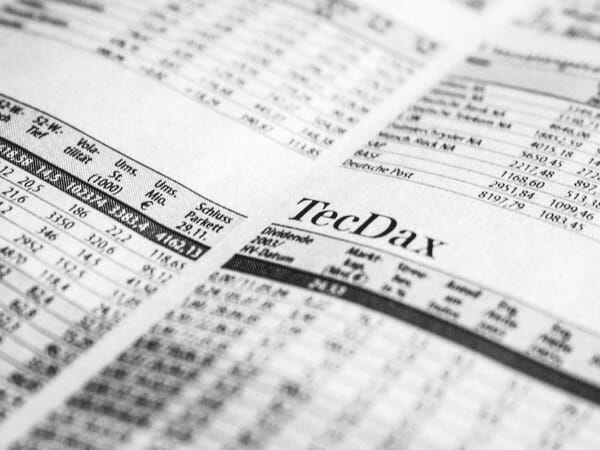How the market works – stock market explained
Before you invest in stocks, you should learn how the market works. You will pour a lot of money into your investments, so you should know how they will help you make more. Now that people can buy and sell stocks on their smartphones, you can see more folks who don’t know what they’re doing. Still, it can be overwhelming to start learning.
Look at a TV show on investments, and the first thing you’ll notice is the numbers and tickers scrolling past the screen. If you look closer into the stock market, you’ll see that it’s similar to any regular market. It’s a platform where a bunch of people starts and close transactions. Eventually, you may even change your view of stock trading.
I’ll start by discussing the origins of the stock market to promote a better understanding of how the stock market works. Then, we’ll go into the modern-day to see how it has changed as time passed. After that, I’ll explain how stock prices are determined, so you’ll understand why they go up and down. More importantly, we’ll talk about how you can start investing.
How the market worked back then

You could trace the concept of a stock market forming far back as the late 1400s. During those times, Belgium was formerly known as Antwerp, and it was the center of international trade.
Merchants bought goods in the hopes that they would eventually increase in value, so they could sell them for profit. Also, some people were already buying debts as bonds.
After 200 years or so, the Dutch, French, and British governments provided grants to various companies, specifically those with “East India” in their name.
There were no airplanes in those times, so people transported goods using massive ships. Unfortunately, their voyages were often dangerous due to raging storms and pirates.
Imagine you owned one of those ships carrying goods across the sea. They often lasted days, but the risks I’ve mentioned could waste your time and effort.
This is why the ship owners looked for investors who would be willing to finance their voyages. In exchange, the investors received some of the profits if the ship successfully returned.
Now, let’s take the point of view of the investors. If you only pour your money into one ship and it fails to come back, that’s all your money sinking into the sea!
In response, investors allocated funds for multiple voyages instead of one. This increases the chances that they make at least a bit of money.
Why did I dig deep into the history of the stock market? If you look closely, the strategy “ship investors” is similar to how modern stock investors diversified their portfolios.
Hundreds of years later, investing in stocks worked more or less the same way. You ensure profits and minimize risks by placing money into more than one asset.
Read More: Investing For Dummies 101
How the market works nowadays
Companies eventually started selling stocks on pieces of paper, allowing investors to trade shares back and forth with others. We know this method today as a direct listing.
Coinbase used this method instead of using secondary markets and an initial public offering (IPO). This allowed the company to reduce the time and money needed to gain investors.
The stock market we know today began to take form in 1773 as the London Stock Exchange (LSE). It got off to a rocky start, but overall exchange trading managed to grow in the 1800s.
In 1972, the New York Stock Exchange (NYSE) was established. It quickly grew to become the dominant exchange platform in the US, and eventually in the whole world.
In the late 20th century, stock trading took place in other institutions such as NASDAQ. It was the first exchange that operated using computer networks.
During those times, investors had to phone their brokers, so they could execute trades on their behalf. Now, anyone can get an online brokerage account and place orders by themselves.
You may have noticed more chatter about stock trading during the pandemic. Thanks to investment apps like Robinhood, you could buy and sell a stock in a few taps!
How are stock prices determined?
Mobile apps provide so much information at your fingertips. It lets you see the real-time stock prices go up and down and view other details like the market cap and trading volume.
Yet, many people still do not understand how or why these prices move in the first place. You’ll often hear points to supply and demand, but how do we truly determine share prices?
Most of the stocks traded nowadays start with the IPO process. To explain this, let’s say you want to publicly offer your stocks. Here are the steps you’ll have to take:
- Choose a bank – You’ll start by looking for an investment bank that will discuss your IPO plans and provide underwriting services. You’ll have to select one carefully based on reputation, experience, and other major factors.
- Start underwriting – After you’ve negotiated with an investment bank, it will serve as the broker between your company and the investing public, so it can help you sell your first batch of shares. This process is called underwriting, and you may click here to learn more about how it works.
- Setting the offer price – Eventually, you and your bank have to agree on the initial price of individual stocks. Most companies underprice their IPOs because their goal is to get as many investors as they can.
- Adjusting the price – Once that price has been exposed to the market, the underwriter will see if the price is too high or too low. It will make the needed adjustments by buying shares at the offering price or lower. During this time, rules against price manipulation are temporarily suspended.
- Transition to market competition – Now, your stock is ready to go out into the market! During its first 25 days, the underwriter will look at how market forces affect the stocks. Then, it will gauge the valuation and profits of the issuing company.
How do the stock prices move?
Now, let’s get into the perspective of your typical stock investor. Look at the typical stock exchange platform, and you’ll see two lists of numbers side-by-side.
The left-hand list often shows the ask prices, while the right-hand side has the bid prices. The former shows the amounts that investors are willing to pay for a certain stock.
Meanwhile, the bid prices are the amounts investors are willing to accept for selling a stock. These offers between buyers and sellers are what drive stock trading.
What if neither side wants to accept offers from the other? Then, purchases and sales of stock will take longer to execute, so investors will struggle to get their desired prices.
This issue is called slippage, and it can be a major issue in stock markets. This often happens because of a large difference between the bid and ask prices.
This gap is called the bid-ask spread, and it became a major issue during the 2008 Financial Crisis. Investors had a hard time executing trades, and they paid more for placing them.
This is why the modern stock market has market makers. These are traders who buy stocks at their bid price and then sell them at the ask price.
This activity allows market makers to eventually reduce the bid-ask spread, so more of the buy and sell orders hit their target prices. As a result, stock market trading keeps moving.
Of course, market makers earn money for their efforts. Companies pay for their services to make sure their stocks keep being traded. Now you know the gist of how the market works!
What should I do before investing?
I’ve talked long enough about how the market works. It’s time to discuss how you can start building your portfolio. First, you must make sure you’re “invested in stocks.”
In other words, you must be sure why you want to purchase stocks in the first place. You must have clear investment goals, or you will likely make bad decisions.
For example, you might be affected by the “fear of missing out” or FOMO. It’s when you buy or sell assets immediately after hearing good or bad news about them.
This could lead you to spread your portfolio too thin, or you may let go of promising assets just because of a temporary setback. After you have a definite plan, check all your options.
Start by looking at economic trends, such as consumer behaviors. Follow the firms that supply what people need and want, and then look for the publicly-traded companies among them.
Stocks shouldn’t be your only choice though. For example, you have index funds, mutual funds, and exchange-traded funds (ETFs). They work differently from stocks though.
For example, index funds follow market indexes such as the Dow Jones Industrial Average and the S&P 500. If you prefer not to follow them, you might want to choose mutual funds instead.
Lastly, confirm if you want short-term or long-term profits. For the former, you might want to try shorting stocks which involves profiting from falling stock prices.
If you want the latter, you might be fine with purchasing a few promising assets and then letting them sit for a year. Of course, it would be great to keep your eyes open for new ones.
Related Articles
Final thoughts
This article is not intended to provide investment advice. It only informs how the market works. As I’ve said, you’re in charge of choosing the assets that will help you achieve your financial goals.
You can start much easier nowadays because several apps let you perform stock trades at the palm of your hands. Click here for a list of the best investment apps.
Investing means constant learning as you’ll have to keep up-to-date with the latest economic trends. Fortunately, the other Inquirer USA articles can provide all that!
Disclaimer: This article is the author’s personal opinion, which may differ from the “official” statements or facts. All writers’ opinions are their own and do not constitute financial advice in any way whatsoever. Nothing published by Inquirer.net constitutes an investment recommendation, nor should any data or content published by Inquirer.net be relied upon for any investment activities.
Usa.inquirer.net strongly recommends that you perform your own independent research and/or speak with a qualified investment professional before making any financial decisions.
Sponsored Advertising Content:
Advertorial or Sponsorship User published Content does not represent the views of the Company or any individual associated with the Company, and we do not control this Content. In no event shall you represent or suggest, directly or indirectly, the Company's endorsement of user published Content.
The company does not vouch for the accuracy or credibility of any user published Content on our Website and does not take any responsibility or assume any liability for any actions you may take as a result of reading user published Content on our Website.
Through your use of the Website and Services, you may be exposed to Content that you may find offensive, objectionable, harmful, inaccurate, or deceptive.
By using our Website, you assume all associated risks.This Website contains hyperlinks to other websites controlled by third parties. These links are provided solely as a convenience to you and do not imply endorsement by the Company of, or any affiliation with, or endorsement by, the owner of the linked website.
Company is not responsible for the contents or use of any linked website, or any consequence of making the link.
This content is provided by New Start Advantage LLC through a licensed media partnership with Inquirer.net. Inquirer.net does not endorse or verify partner content. All information is for educational purposes only and does not constitute financial advice. Offers and terms may change without notice.





